And a very happy birthday to author and academic, Judith Butler!

Though perhaps not a widely known theoretician, Butler is revered and oft-discussed in the field of gender and women’s studies for her study of gender performance. It’s a notoriously difficult concept–essentially, trying to determine whether we behave as “women” or “men”, and relate to each other as such, as a result of biological factors or cultural expectations. Or both. Which means we can’t not act that way, because there is no room to do otherwise (unless cultures change to make it possible, in which case, we have to start the process over again).
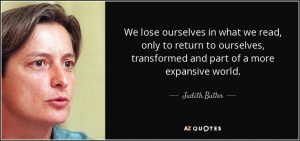 In the end, however, as I explain to my students (those poor kids), what Butler’s arguments all boil down to, is “what makes a life worth grievable”? What characteristics of a life make it worth remembering, worth defending? And what qualities make it forgettable, expendable? And that question, I think, pulls us out of the realm of academia and forces us to confront the ties that bind us all together and that, ultimately, make us, and everyone around us, and in contact with us, and on the planet along with us, human. It forces us to think about the act of empathy, and why we can walk in some people’s shoes, but refuse to try on others. And, just maybe, it might make us willing to try to forge new connections, and realize how we are all, really, fundamentally, connected. To use her words, from Gender Trouble, “Let’s face it. We’re undone by each other. And if we’re not, we’re missing something.” (19)
In the end, however, as I explain to my students (those poor kids), what Butler’s arguments all boil down to, is “what makes a life worth grievable”? What characteristics of a life make it worth remembering, worth defending? And what qualities make it forgettable, expendable? And that question, I think, pulls us out of the realm of academia and forces us to confront the ties that bind us all together and that, ultimately, make us, and everyone around us, and in contact with us, and on the planet along with us, human. It forces us to think about the act of empathy, and why we can walk in some people’s shoes, but refuse to try on others. And, just maybe, it might make us willing to try to forge new connections, and realize how we are all, really, fundamentally, connected. To use her words, from Gender Trouble, “Let’s face it. We’re undone by each other. And if we’re not, we’re missing something.” (19)
And the beautiful part is that Butler extends this lesson not only to our current day existence, but to literature, as well. In one of her more recent books, Frames of War, Butler talks about poetry, and why poems written by prisoners at Guantanamo Bay were destroyed under the allegation that they were a threat to national security. And her answer is that poetry, as an art form and a personal statement, is a way of not only documenting the harm done to the body, but also it’s ability to survive. Writing about your condition, and allowing another to read your words, creates a bond that makes for a grievable life:
The words are carved in cups, written on paper, recorded onto a surface, in an effort to leave a mark, a trace, of a living being – a sign formed by the body, a sign that carries the life of the body. And even when what happens to a body is not survivable, the words survive to say as much. (59)
Which is just one of the reasons we are so grateful, every day, to be able to share stories with you. And why we celebrate Judith Butler today.
And, speaking of books…..here are some new ones that skipped onto our shelves this week and are eager to meet you.

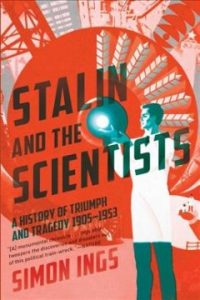 Stalin and the Scientists: Scientists throughout history, from Galileo to today’s experts on climate change, have often had to contend with politics in their pursuit of knowledge. But in the Soviet Union, where the ruling elites embraced, patronized, and even fetishized science like never before, scientists lived their lives on a knife edge. The Soviet Union had the best-funded scientific establishment in history. Scientists were elevated as popular heroes and lavished with awards and privileges. But if their ideas or their field of study lost favor with the elites, they could be exiled, imprisoned, or murdered. And yet they persisted. In this fascinating tale, Simon Ings traces the lives of some of the USSR’s most noted scientists, from the beginning of Russia’s revolutionary period in 1905 until the death of Stalin in 1953. Though it is a story of incredible triumphs, breakthroughs, and globally-significant discoveries, it is also a heartrending story of folly and ignorance, as Ings looks at Stalin’s power over his intellectuals, and the damage he inflicted on scientists and their field by refusing to give up outdated notions of biology (and, for a time, denying the existence of genes), and punishing those who refuted him. The book is not only one for those looking to learn more about the vagaries of Soviet history, but also for science enthusiasts who are looking for the compelling human side to some of the 20th century’s most notable breakthroughs. Ings’ work has already been nominated for several non-fiction awards, and the UK’s Sunday Business Post said in it’s review, “[Ings] has an eye for the interactions between the worlds of the laboratory, the print room and the corridors of power . . . Stalin and the Scientists is a fascinating read. Well researched and written in a lively and engaging style, it grips like a good novel would.”
Stalin and the Scientists: Scientists throughout history, from Galileo to today’s experts on climate change, have often had to contend with politics in their pursuit of knowledge. But in the Soviet Union, where the ruling elites embraced, patronized, and even fetishized science like never before, scientists lived their lives on a knife edge. The Soviet Union had the best-funded scientific establishment in history. Scientists were elevated as popular heroes and lavished with awards and privileges. But if their ideas or their field of study lost favor with the elites, they could be exiled, imprisoned, or murdered. And yet they persisted. In this fascinating tale, Simon Ings traces the lives of some of the USSR’s most noted scientists, from the beginning of Russia’s revolutionary period in 1905 until the death of Stalin in 1953. Though it is a story of incredible triumphs, breakthroughs, and globally-significant discoveries, it is also a heartrending story of folly and ignorance, as Ings looks at Stalin’s power over his intellectuals, and the damage he inflicted on scientists and their field by refusing to give up outdated notions of biology (and, for a time, denying the existence of genes), and punishing those who refuted him. The book is not only one for those looking to learn more about the vagaries of Soviet history, but also for science enthusiasts who are looking for the compelling human side to some of the 20th century’s most notable breakthroughs. Ings’ work has already been nominated for several non-fiction awards, and the UK’s Sunday Business Post said in it’s review, “[Ings] has an eye for the interactions between the worlds of the laboratory, the print room and the corridors of power . . . Stalin and the Scientists is a fascinating read. Well researched and written in a lively and engaging style, it grips like a good novel would.”
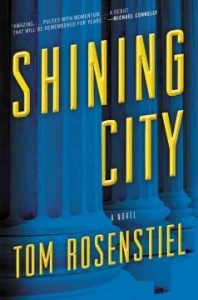 Shining City: Tom Rosenstiel’s debut thriller has been getting thumbs-up from a number of fellow authors and critics alike for it’s twists, turns, and unrelenting pace. Peter Rena is a “fixer.” He and his partner, Randi Brooks, earn their living making the problems of the powerful disappear. They get their biggest job yet when the White House hires them to vet the president’s nominee for the Supreme Court. Judge Roland Madison is a legal giant, but he’s a political maverick, with views that might make the already tricky confirmation process even more difficult. But while Rena and his team put all their efforts into investigating the judge–and thwarting the attempted interventions of Washington’s elite–a series of seemingly random killings begins to overlap with their case, and it seems Judge Madison is the intended target. Rosentiel himself is the executive director of the American Press Institute, a senior fellow at the Brookings Institution, and founder of the Pew Research Center’s Project for Excellence in Journalism, so he certainly knows his politics, his personalities, and how to tell a gripping tale. Though this is his first foray into fiction, Library Journal didn’t hesitate to give the book a starred review, saying it “shines with page-turning intensity that will make readers hope that this book is the beginning of a new series. Highly recommended for legal and political thriller junkies and fans of David Baldacci and John Grisham.”
Shining City: Tom Rosenstiel’s debut thriller has been getting thumbs-up from a number of fellow authors and critics alike for it’s twists, turns, and unrelenting pace. Peter Rena is a “fixer.” He and his partner, Randi Brooks, earn their living making the problems of the powerful disappear. They get their biggest job yet when the White House hires them to vet the president’s nominee for the Supreme Court. Judge Roland Madison is a legal giant, but he’s a political maverick, with views that might make the already tricky confirmation process even more difficult. But while Rena and his team put all their efforts into investigating the judge–and thwarting the attempted interventions of Washington’s elite–a series of seemingly random killings begins to overlap with their case, and it seems Judge Madison is the intended target. Rosentiel himself is the executive director of the American Press Institute, a senior fellow at the Brookings Institution, and founder of the Pew Research Center’s Project for Excellence in Journalism, so he certainly knows his politics, his personalities, and how to tell a gripping tale. Though this is his first foray into fiction, Library Journal didn’t hesitate to give the book a starred review, saying it “shines with page-turning intensity that will make readers hope that this book is the beginning of a new series. Highly recommended for legal and political thriller junkies and fans of David Baldacci and John Grisham.”
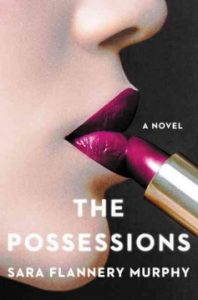 The Possessions: Another debut here, this one dealing with death, desire, and the lengths that both will force us to go. In the world that Sara Flannery Murphy has created, people (known as ‘bodies’) are employed to embody the deceased, by wearing their clothes, and taking a pill called lotuses to summon spirits and dampen their own thoughts. Edie has been a body at the Elysian Society for five years, an unusual record. Her success is the result of careful detachment, and a total refusal to get involved in her clients’ lives. But when Edie channels Sylvia, the dead wife of recent widower Patrick Braddock, she becomes obsessed with the glamorous couple. Despite the murky circumstances surrounding Sylvia’s drowning, Edie breaks her own rules and pursues Patrick, moving deeper into his life, even as her own begins to unravel. An unsettling, unexpected, and totally gripping tale of secrets, lies, obsession, and loss, this book is getting wild reviews from a wide audience of critics, writers, and readers, including Publisher’s Weekly, who gave it a starred review, and called it “Suspenseful….a beautifully rendered, haunting page-turner.”
The Possessions: Another debut here, this one dealing with death, desire, and the lengths that both will force us to go. In the world that Sara Flannery Murphy has created, people (known as ‘bodies’) are employed to embody the deceased, by wearing their clothes, and taking a pill called lotuses to summon spirits and dampen their own thoughts. Edie has been a body at the Elysian Society for five years, an unusual record. Her success is the result of careful detachment, and a total refusal to get involved in her clients’ lives. But when Edie channels Sylvia, the dead wife of recent widower Patrick Braddock, she becomes obsessed with the glamorous couple. Despite the murky circumstances surrounding Sylvia’s drowning, Edie breaks her own rules and pursues Patrick, moving deeper into his life, even as her own begins to unravel. An unsettling, unexpected, and totally gripping tale of secrets, lies, obsession, and loss, this book is getting wild reviews from a wide audience of critics, writers, and readers, including Publisher’s Weekly, who gave it a starred review, and called it “Suspenseful….a beautifully rendered, haunting page-turner.”
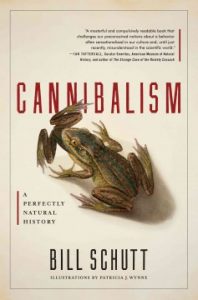 Cannibalism: A Perfectly Natural History: There. That got your attention, didn’t it? For centuries scientists have written off cannibalism as a bizarre phenomenon with little biological significance. Its presence in nature was dismissed as a desperate response to starvation or other life-threatening circumstances, and few spent time studying it. A taboo subject in our culture, the behavior was portrayed mostly through horror movies or tabloids sensationalizing the crimes of real-life flesh-eaters. But the true nature of cannibalism–the role it plays in evolution as well as human history–is even more intriguing (and more normal) than the misconceptions we’ve come to accept as fact. In this work, Bill Schutt, a professor of biology at Long Island University delves into both science and history to look at why certain species consume themselves, and what significance that carries. The result is a bizarre and wonderful genre cross-over that spans continents and species to look at a practice that has been much discussed, but seldom truly considered.
Cannibalism: A Perfectly Natural History: There. That got your attention, didn’t it? For centuries scientists have written off cannibalism as a bizarre phenomenon with little biological significance. Its presence in nature was dismissed as a desperate response to starvation or other life-threatening circumstances, and few spent time studying it. A taboo subject in our culture, the behavior was portrayed mostly through horror movies or tabloids sensationalizing the crimes of real-life flesh-eaters. But the true nature of cannibalism–the role it plays in evolution as well as human history–is even more intriguing (and more normal) than the misconceptions we’ve come to accept as fact. In this work, Bill Schutt, a professor of biology at Long Island University delves into both science and history to look at why certain species consume themselves, and what significance that carries. The result is a bizarre and wonderful genre cross-over that spans continents and species to look at a practice that has been much discussed, but seldom truly considered.
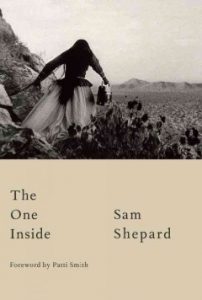 The One Inside: Another debut…of a sort….this is Pulitzer Prize-winning playwright Sam Shepard’s first long work, and deals, as so many of his plays have done, on issues of memory, death, and the distance between the past and the present. We begin in a man’s house at dawn in rural America, as the man himself tries to follow the journey of his life, but the more he travels, the more his perspective begins to shift; first from his life to that of his late father’s, from his home to the broader landscape of the American midwest, and from his individual life to that of his father’s young girlfriend, with whom the man was also involved. Filled with references to the places the man has been, the sights he’s seen, the culture (and drugs) he’s ingested, and the scars he bears, this is a haunting dreamscape of a book that is poignant and haunting and utterly unique. Kirkus Reviews agrees, calling Shepard’s work “An elegiac amble through blowing dust and greasy spoons, the soundtrack the whine of truck engines and the howl of coyotes. . . . It’s a story to read not for the inventiveness of its plot but for its just-right language and image.”
The One Inside: Another debut…of a sort….this is Pulitzer Prize-winning playwright Sam Shepard’s first long work, and deals, as so many of his plays have done, on issues of memory, death, and the distance between the past and the present. We begin in a man’s house at dawn in rural America, as the man himself tries to follow the journey of his life, but the more he travels, the more his perspective begins to shift; first from his life to that of his late father’s, from his home to the broader landscape of the American midwest, and from his individual life to that of his father’s young girlfriend, with whom the man was also involved. Filled with references to the places the man has been, the sights he’s seen, the culture (and drugs) he’s ingested, and the scars he bears, this is a haunting dreamscape of a book that is poignant and haunting and utterly unique. Kirkus Reviews agrees, calling Shepard’s work “An elegiac amble through blowing dust and greasy spoons, the soundtrack the whine of truck engines and the howl of coyotes. . . . It’s a story to read not for the inventiveness of its plot but for its just-right language and image.”
Until next week, beloved patrons–happy reading!


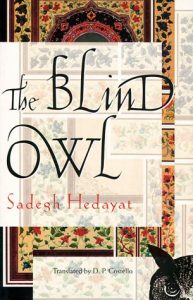 He produced a considerable body of work, including short stories, poems, travel pieces, and literary criticism, all of which attempted to move Iranian literature into the ‘modern’ world. At the same time, he began heavily criticizing what he perceived to be the two major causes of Iran’s decimation: the monarchy and the clergy, and through his stories he tried to impute the deafness and blindness of the nation to the abuses of these two major powers. His most well-known work,
He produced a considerable body of work, including short stories, poems, travel pieces, and literary criticism, all of which attempted to move Iranian literature into the ‘modern’ world. At the same time, he began heavily criticizing what he perceived to be the two major causes of Iran’s decimation: the monarchy and the clergy, and through his stories he tried to impute the deafness and blindness of the nation to the abuses of these two major powers. His most well-known work, 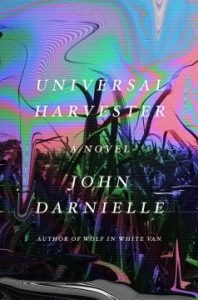 Universal Harvester
Universal Harvester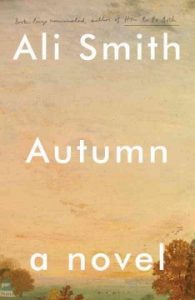 Autumn
Autumn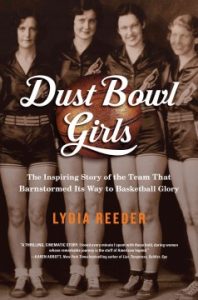 Dust Bowl Girls
Dust Bowl Girls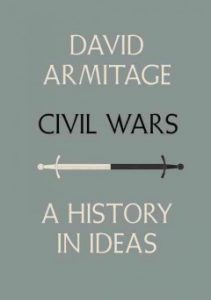 Civil Wars: A History in Ideas
Civil Wars: A History in Ideas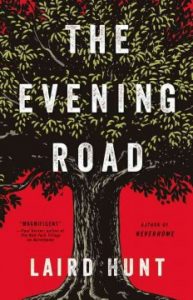
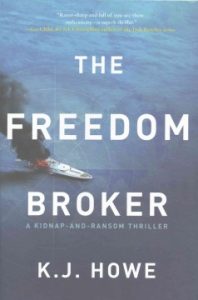 The Freedom Broker
The Freedom Broker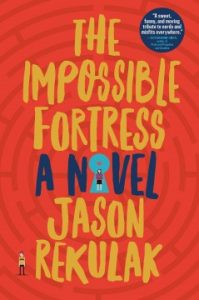 The Impossible Fortress
The Impossible Fortress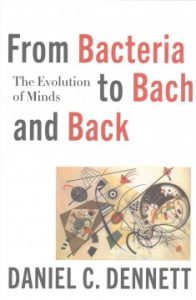 From Bacteria to Bach and Back : The Evolution of Minds
From Bacteria to Bach and Back : The Evolution of Minds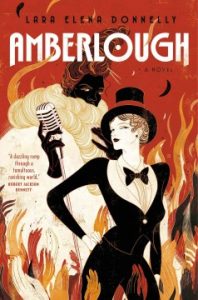 Amberlough
Amberlough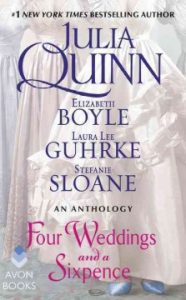 Four Weddings and a Sixpence
Four Weddings and a Sixpence
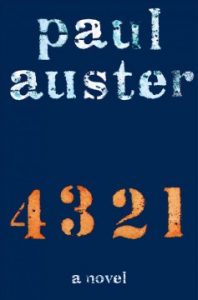 4 3 2 1
4 3 2 1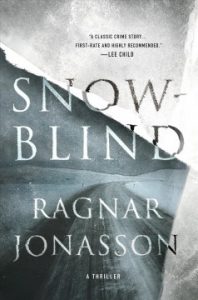
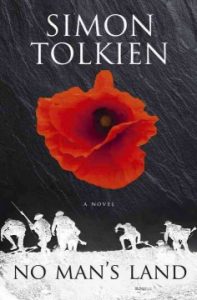 No Man’s Land
No Man’s Land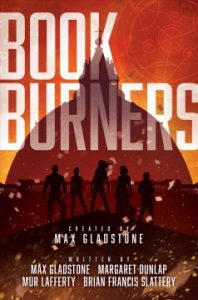
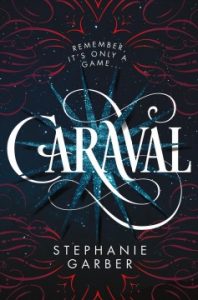 Caraval
Caraval

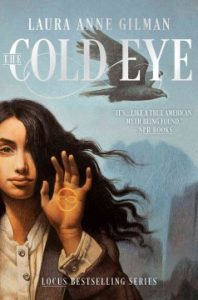 The Cold Eye
The Cold Eye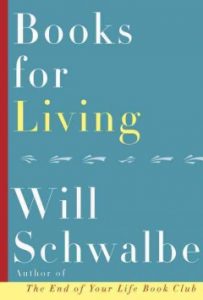 Books for Living
Books for Living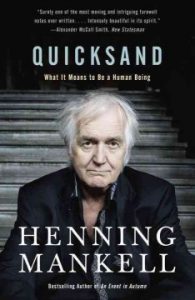
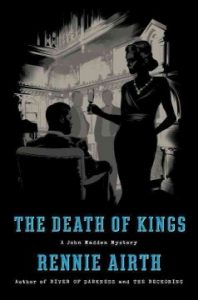
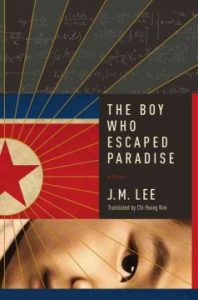 The Boy Who Escaped Paradise
The Boy Who Escaped Paradise
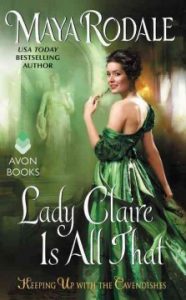 Lady Claire is All That
Lady Claire is All That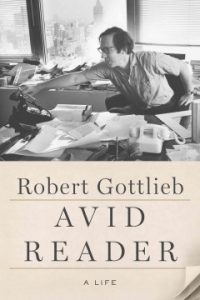 Avid Reader: A Life
Avid Reader: A Life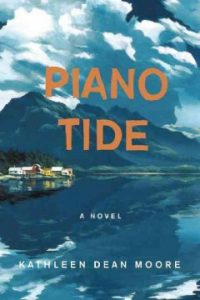 Piano Tide
Piano Tide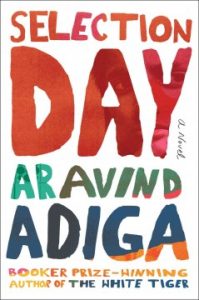 Selection Day
Selection Day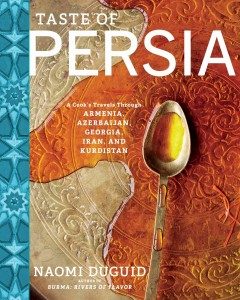 Taste of Persia
Taste of Persia The Man With the Poison Gun
The Man With the Poison Gun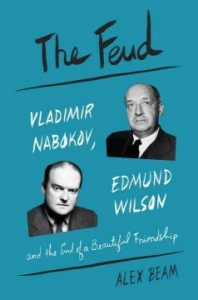 The Feud: Vladimir Nabokov, Edmund Wilson, and the End of a Beautiful Friendship
The Feud: Vladimir Nabokov, Edmund Wilson, and the End of a Beautiful Friendship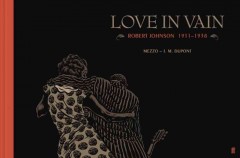 Love In Vain:
Love In Vain: 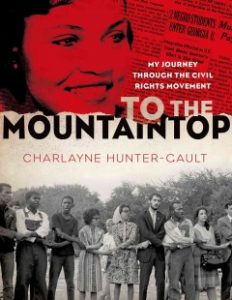 To The Mountaintop : My Journey Through The Civil Rights Movement
To The Mountaintop : My Journey Through The Civil Rights Movement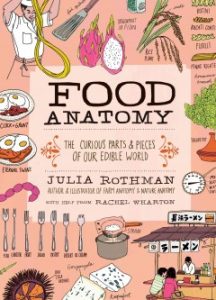 Food Anatomy : The Curious Parts & Pieces of Our Edible World
Food Anatomy : The Curious Parts & Pieces of Our Edible World